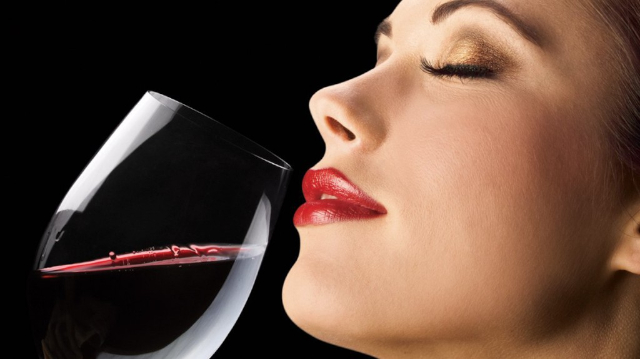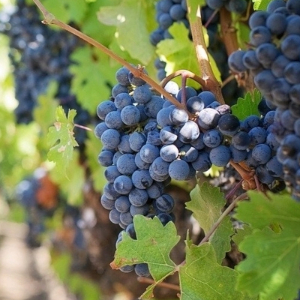I spend a significant amount of time, in casual conversation with folks as well as answering reader inquiries, setting them straight on common misconceptions about wine. So today I present my carefully curated collection of wine questions…
 You don’t need an array of special-purpose glasses to enjoy good wine!
You don’t need an array of special-purpose glasses to enjoy good wine!
The most-asked wine questions…
Is wine made only from grapes?
Traditionally, wine is made exclusively from grapes. Grapes are part of the official definition. But the wine making process has been adapted to making alcoholic beverages with everything from apples and plums to dandelions and elder flowers.
Which grapes are used for which wines?
Broadly speaking, red grapes are used for wine, white grapes are used for white wine, and rosé grapes are used for rosé wines. But there are exceptions. Notably the white versions of varietals such as Cabernet Sauvignon, Sangiovese, Pinot and Tempranillo are made by gently crushing the grapes, and letting the clear juice run off. If you press the grapes, you also get the colour and bolder flavours from the skins. Which are red.
Also, few folks know that champagne is traditionally made with a blend of three grapes – two of which are red.
What’s the difference between varietals, regionals and ‘chateaux’?
Varietal wines are made with a single grape type. Think Cabernet, Sauvignon Blanc and Pinot. Regional wines are named for the area where they were grown. Such as Bordeaux, Rhone and Champagne. Regionals may be single-grape wines, but are more often traditional blends of 2 or more.
‘Chateau’ or ‘Estate’ bottled wines may come from any region. And they may be blends of 2 or more grapes, grown on the same estate, and blended per an old family recipe. A few specific ‘Estate’ labels are considered the top tier of wines of their types and regions.
What are fortified wines?
They’re certain types of wine that are fortified with the addition of straight alcohol or other distilled spirits. Think Cream Sherry, Dubonnet and Vermouth.
What about Organic wines?
They’re essentially just like regular wines, but the grapes are grown without any artificial pesticides or fertilizers. They’re also fermented without the use of any chemicals. Like Organic produce, the wines are no different from their non-organic counterparts in nutritional value. But they will probably cost more, just because they’re organic.
Corks vs. screw caps?
Everyone used corks back when corks were the only – and traditional – method of sealing wine bottles. They didn’t always do the job, though. Sommeliers and home drinkers alike learned to test the contents of a bottle by sniffing before tasting. That’s the easy way to tell whether the contents have gone to vinegar, or become moldy.
Screw caps, on the other, provide a sure, solid hermetic seal. And spoilage in transit or storage is almost unheard of today. That’s why they’re used on the vast majority of low and mid-range wines.
But corks are still employed for higher-priced, more prestigious wines. It’s not a practical matter. It’s just that wine snobs expect to see a cork on their fine wines.
And you should always store corked wines lying down. This keeps the cork moist and optimizes the seal.
The best temperature to serve wine?
It’s universally held, in the greater global wine community, that the oiptimum temperature to serve red wines is 54 F / 12 C. That’s traditionally referred to as ‘cellar temperature. Like any perishable preserved comestible, wine should always been stored in a cool, dry, dark place. Hence the adoption of the cellar for wines.
But there is another school of thought re.- whites and rosés. Some say cellar temperature is not only traditional, but functionally best. Others insist that whites and rosés should be chilled on ice to best represent themselves on your palate. If you chill them in the fridge, don’t leave them in longer than about 30 minutes.
When you over-chill any beverage with delicate flavour notes, you risk subduing them or even blotting them out completely. And what’s wine, first and foremost, if not a celebration of flavour?
Is the house wine a good choice?
Sure. It’s standing for the reputation and ‘taste’ of the restaurant. And it’s usually a mid-range wine with a good balance of fruit and acid. Call it a balance of price vs. flavour…
What about different wine glass shapes?
It’s a little about flavour and bouquet. And a lot about snobbery. Your enjoyment of wines such as sherries and fine bordeaux can definitely benefit from drinking them out of balloon or ‘standard’ (oval-bodied) glasses, respectively. They say champagne should be consumed from tall ‘flute’ or ‘tulip’ glasses – so you can watch the bubbles rise. And Fortified wines such as Madera and Port should be taken in small, short-stemmed glasses designed to hold hold up to 2 oz. / 60 ml. But filled only about half way.
But my rule is: Use whatever glasses you have. The ‘standard’ glass is your best multi-purpose choice. Given that the ‘standard serving’ of wine is 4 – 6 oz. / 120 – 180 ml, a medium-sized glass made to hold 8 – 10 oz. / 235 – 295 ml is probably optimum.
Now you know everything!
Well… More than you did before reading this post, I hope. And I hope having this handy reference available will help you with your wine-related choices!
~ Maggie J.

